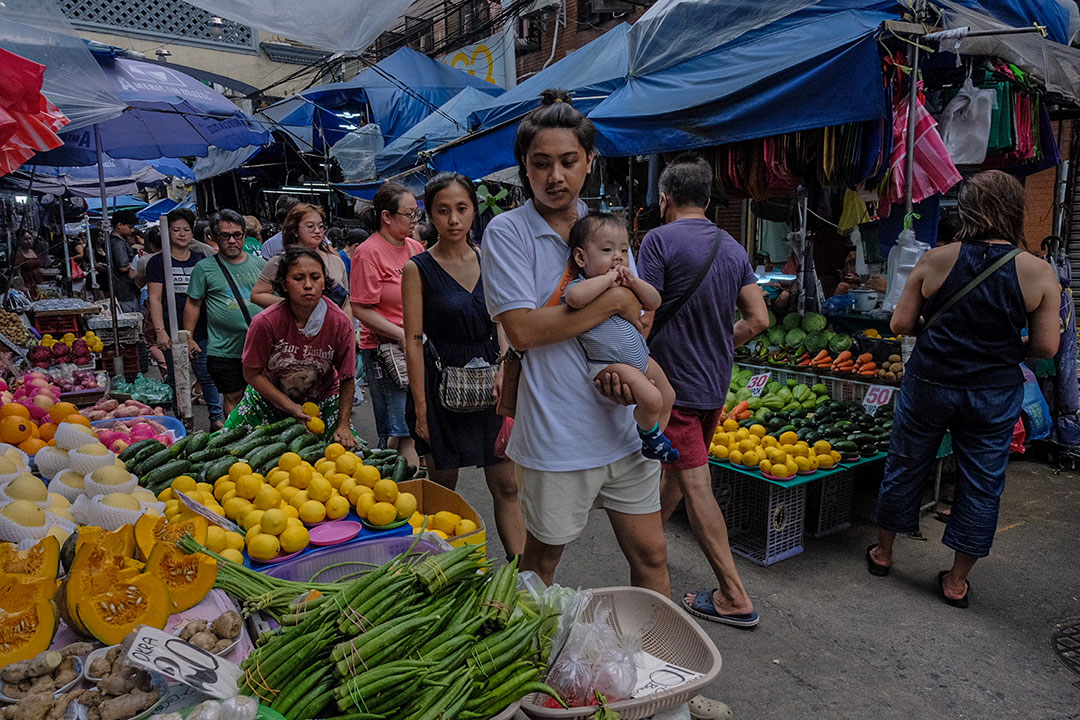




Quarterly Economic Growth Release: More BSP cuts to come
 DOWNLOAD
DOWNLOAD

Monthly Economic Update: Fed catches up
 DOWNLOAD
DOWNLOAD

Inflation Update: Steady and mellow
 DOWNLOAD
DOWNLOAD


Inflation likely below 3% in Sept. — BSP

Inflation likely eased below 3% in September, the Bangko Sentral ng Pilipinas (BSP) said, as food and fuel costs declined.
The central bank’s month-ahead forecast showed that inflation likely settled within the 2-2.8% range.
This would be slower than 3.3% in August and 6.1% a year ago.
A BusinessWorld poll of 15 analysts conducted last week yielded a median estimate of 2.5% for the September consumer price index (CPI). This would also be the slowest print in nearly four years or since 2.3% in October 2020.
“Negative base effects along with lower prices of food commodities including rice, meat and vegetables, as well as lower domestic oil prices, and the appreciation of the peso are the primary sources of downward price pressures for the month,” the BSP said in a statement.
The Philippine Statistics Authority (PSA) will release September inflation data on Friday (Oct. 4).
“Recent available data from the Department of Agriculture and PSA indicate a decline in rice prices from last month, especially with the continuous implementation of the reduction in tariffs on imported rice and the decline in global rice prices,” Metropolitan Bank & Trust Co. (Metrobank) said in a report.
An executive order, which slashed tariffs on rice imports to 15% from 35% until 2028, took effect in July.
In August, rice inflation eased to 14.7% from 20.9% in July. Rice typically accounts for nearly half of overall inflation.
Metrobank expects rice inflation hitting single-digit levels, possibly at around 6%, amid high base effects.
De La Salle University economist Mitzie Irene P. Conchada said the decline in fuel prices would also bring down the prices of other key commodities.
“Inflation for September is expected to slow down due to lower fuel prices. Because of this, food and other basic commodity prices have stayed the same or lower,” she said in an e-mail.
In September, pump price adjustments stood at a net decrease of PHP 0.95 a liter for gasoline, PHP 2.10 for diesel and PHP 2.35 for kerosene.
The peso appreciated by 8.1 centavos to PHP 56.03 a dollar at end-September from its PHP 56.111 finish at end-August.
The central bank said lower food and fuel prices likely offset the higher prices of fish, fruits and electricity.
“Fish prices this month went up due to supply disruptions brought on by inclement weather,” Metrobank said.
“Inclement weather brought about by the southwest monsoon disrupted the supply of agricultural commodities, driving select vegetable prices up. With lowland vegetables like ampalaya, eggplants and carrots the most affected, prices of some highland vegetables also increased,” it added.
For September, Manila Electric Co. (Meralco) raised the overall rate by PHP 0.1543 per kilowatt-hour (kWh) to PHP 11.7882 per kWh from PHP 11.6339 per kWh in the previous month.
Meanwhile, the BSP said the Monetary Board “will continue to take a measured approach in ensuring price stability conducive to balanced and sustainable growth of the economy and employment.”
The improving inflation path would give the BSP room to continue its policy reductions, Metrobank said.
“This also provides more space for the central bank to deliver two more 25-basis-point (bp) cuts each at the remaining Monetary Board meetings this year to help economic growth as inflation slows,” it said.
The Monetary Board’s next meeting was rescheduled to Oct. 16 from Oct. 17. Its final meeting for the year is set for Dec. 19.
BSP Governor Eli M. Remolona, Jr. on Monday said there is scope to cut interest rates by 50 bps in one meeting, but this would only be done in a “hard-landing” scenario.
If there is no risk of a hard landing, he noted the likelihood of delivering 25-bp rate cuts during each of the two remaining meetings.
In August, the central bank reduced borrowing costs for the first time in nearly four years, cutting its policy rate by 25 bps to 6.25% from the over 17-year high of 6.5%. – Luisa Maria Jacinta C. Jocson, Reporter
This article originally appeared on bworldonline.com





 By BusinessWorld
By BusinessWorld